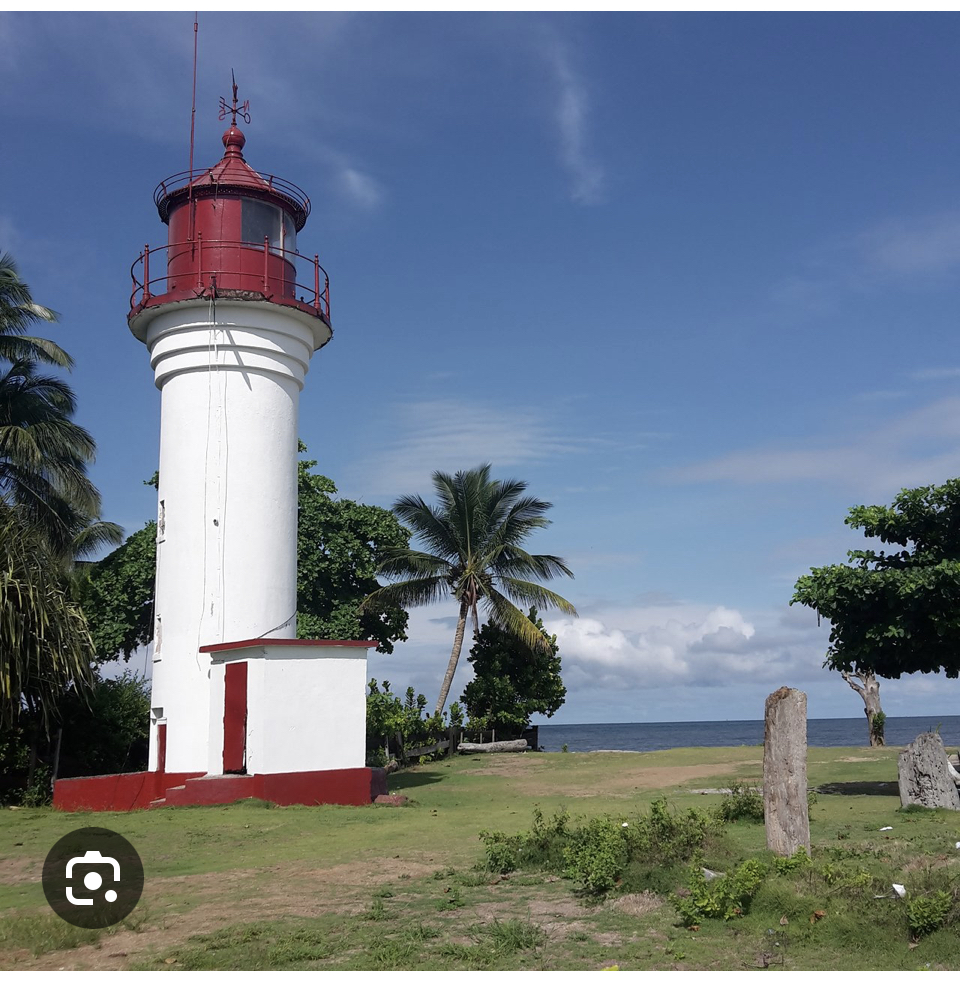Kribi Lighthouse
IALA Heritage Lighthouse of the Year Nominee
Location: CAMEROON - South. Kribi.
Lighthouse Operator: Port Authority Of Kribi

Source: (photos as submitted to accompany nomination form submitted by Port Authority Of Kribi 2023)
Lighthouse Description and History
(Text extracted from nomination form submitted by Port Authority Of Kribi 2023)
Located on the left bank, south of the Kienke river, the Kribi lighthouse was constructed by the Germans in 1906, while the old port on that river was used by German settlers to export such goods as cocoa, wood, coffee, rubber, ivory, etc…
Accessible from the beach, near and adjacent to a restaurant and hotel, it is shape like a cylindrical concrete tower topped by a 18 meter high, red-painted dome, with a white lantern inside.
At the top, a weathervane with a banner dating back 1906, gives the building a historic appearance. The lighthouse plays a major role in the safety of maritime navigation and landing on the beach. The green light access to the beach is fixed on the cathedral’s bell tower, 30 meters above sea level.
Reason For Nomination
(Text extracted from nomination form submitted by Port Authority Of Kribi 2023)
Intrinsic Heritage Interest of the Lighthouse
The history of the Kribi lighthouse is associated to the tragic history of the Batanga people (people from the city of Kribi).
Since the arrival of the first settlers in 1884 and the construction of the old port of Kribi, the Batanga people have been used as forced labour. The first tragedy came about when the British sailor Govier was taken hostage by Batanga people in 1880. This led the British navy to start the Daya War and bomb Kribi, causing many deaths. Batanga villages on the coast south of Kribi were systematically wiped out and burnt by British forces in retaliation.
The Kribi lighthouse was constructed in 1906 when the Germans arrived. During the First World War (1914 – 1918) Kribi was occupied by the Germans, who suffered fighting the allied forces. The Batanga were used as human shields by the German forces. The allies, whose ships anchored off the coast thanks to the Kribi lighthouse, tried to evacuate Kribi, but around 10,000 Batanga perished. The survivors, loaded on to allied ships, were then disembarked and used as forced labour on the tea plantations of the British colony in Western Cameroon.
It was not until May 1916 that the Franco-British allies organised the return of the Batanga survivors to their homeland, thus putting an end to this tragedy.
The Kribi lighthouse played a major role to rescue the Batanga people, who had been held prisoners by German colonists, allowing allied forces to land safety and free people who had been used as human shields during the war.
Conservation
The Kribi lighthouse was handed over by the government to the port of Kribi as heritage asset when it was commissioned in 2018.
It underwent rehabilitation work in 2020, as part of a contract awarded to the company Scin Sarl, following a national call for tenders.
The works have enabled the following to be renovated:
– the concrete tower,
– the metal parts of the lighthouse,
– the stairs,
– the lantern,
– the dome.
Today, the lighthouse undergoes maintenance work every six months, to refresh the anticorrosive paint on the exposed parts, in order to guarantee the visibility of the lighthouse for the safety of maritime navigation on the Kienke river.
Public Access and Education
Right next to the Kribi lighthouse is a green-painted concrete monument, in the shape of a square topped by a pyramid. Its was constructed in February 2017 as a reminder of the tragedy of the Batanga people. The reliefs of this monument and a stele bring back to mind the episodes of this tragedy.
This monument, which dominates the coastline, is commemorated every 9th May during the Mayi Festival, with dances and processions on land and sea. This every-year- commemoration educates people about the history of the Batanga peoples and the role played by the lighthouse in their liberation by the allied force during the First World War.

